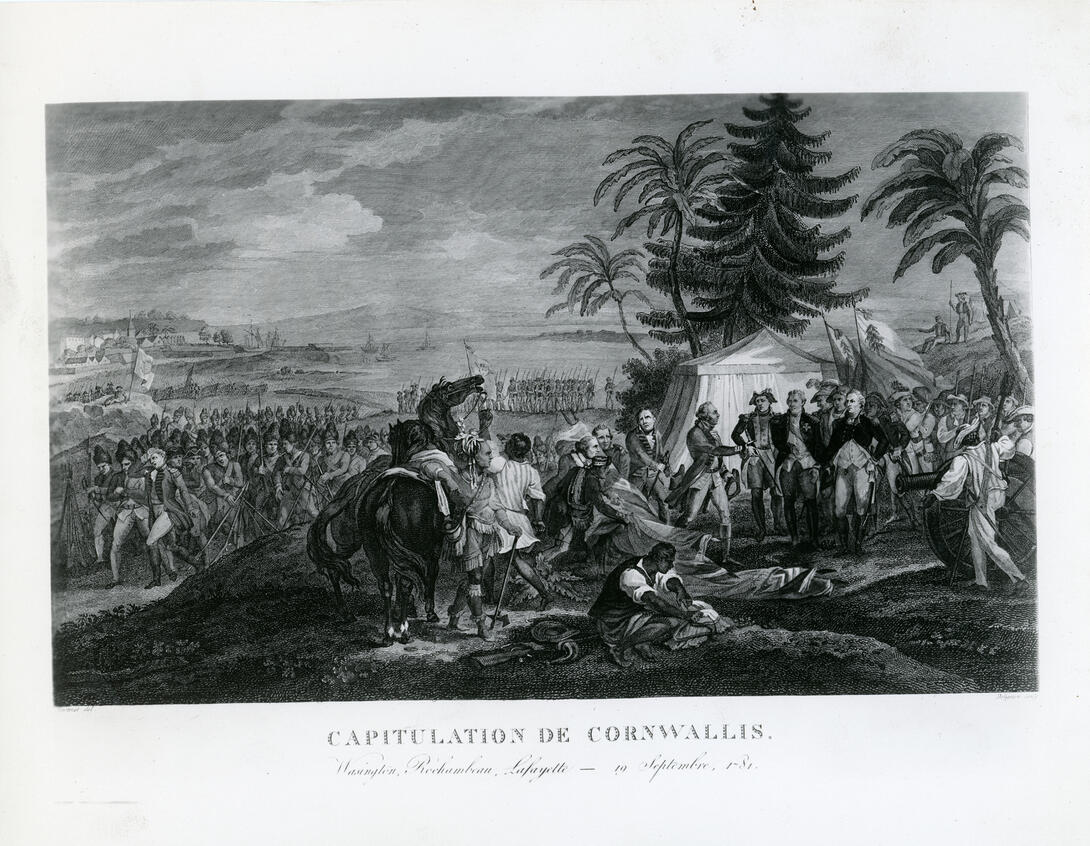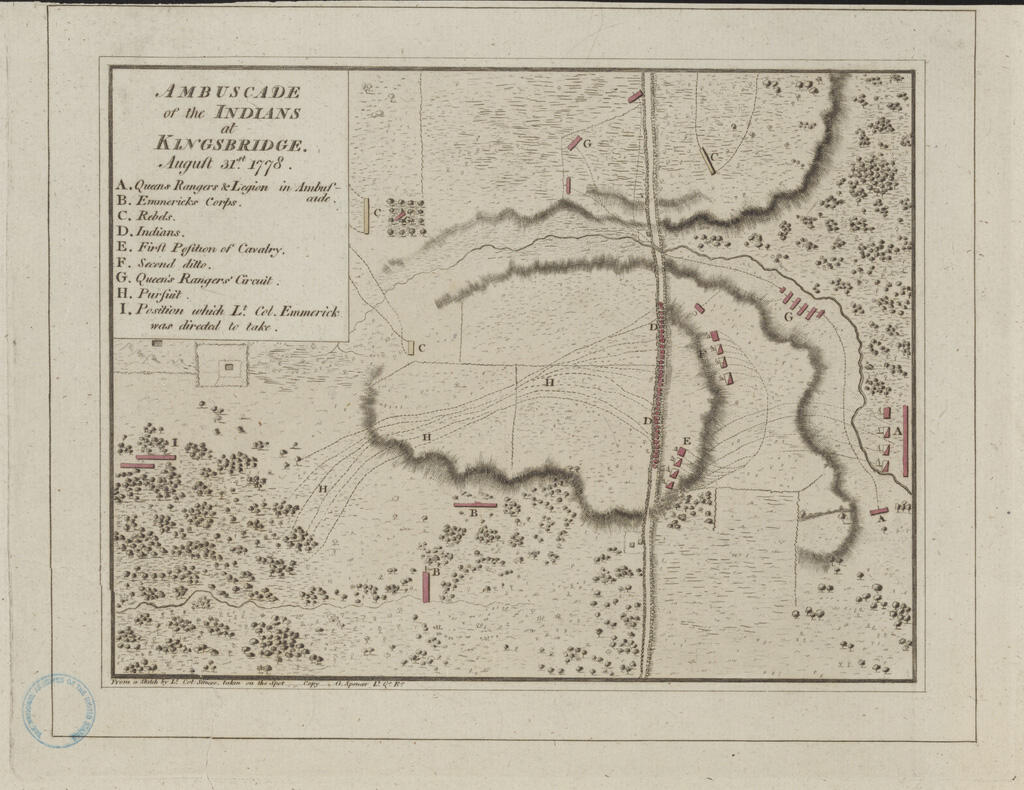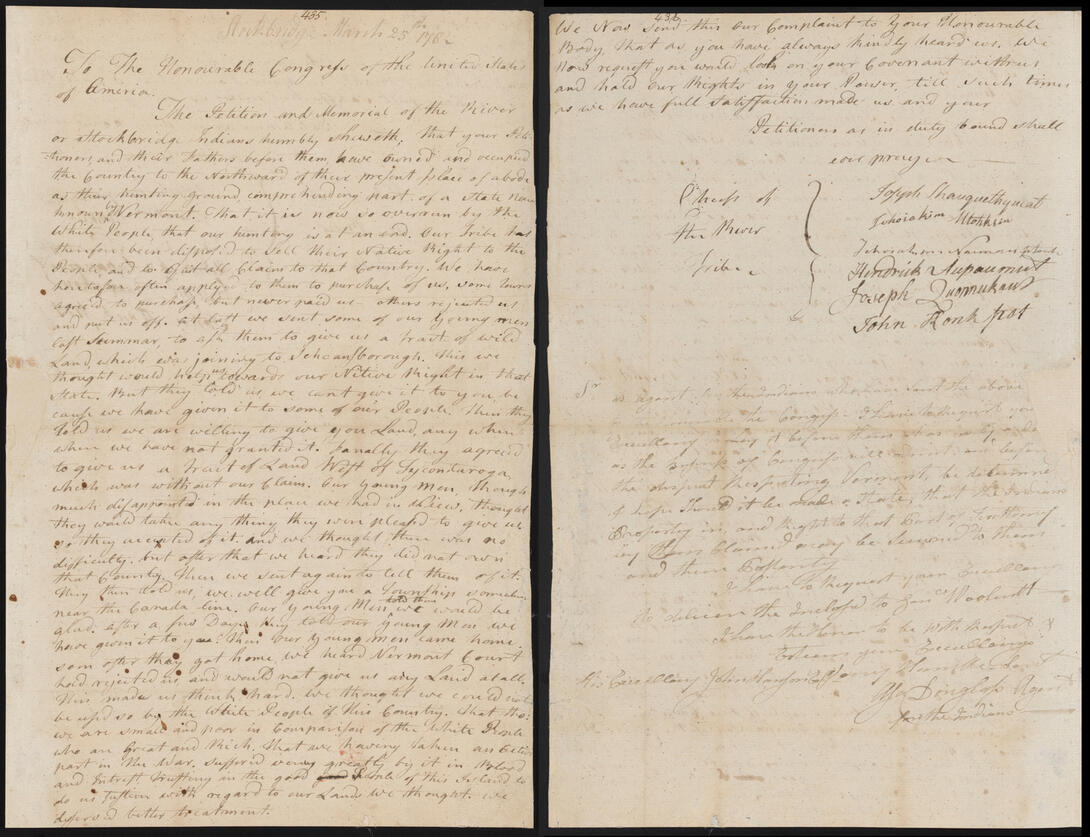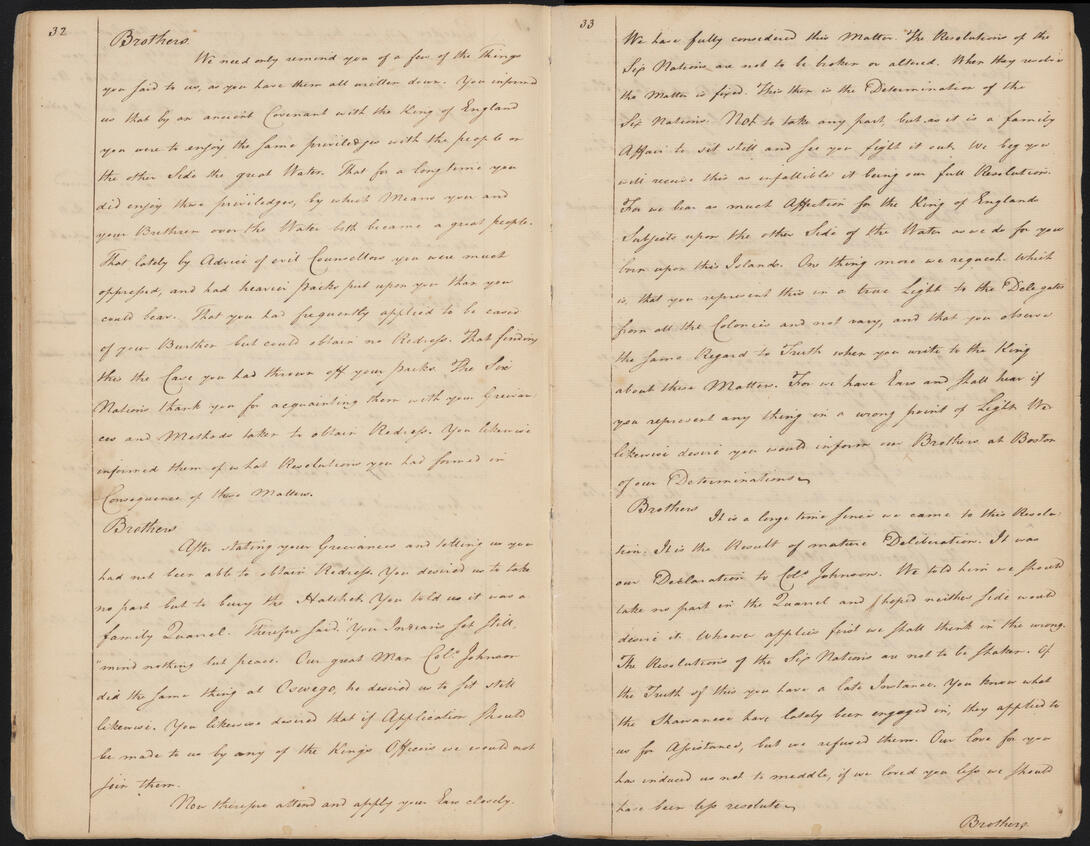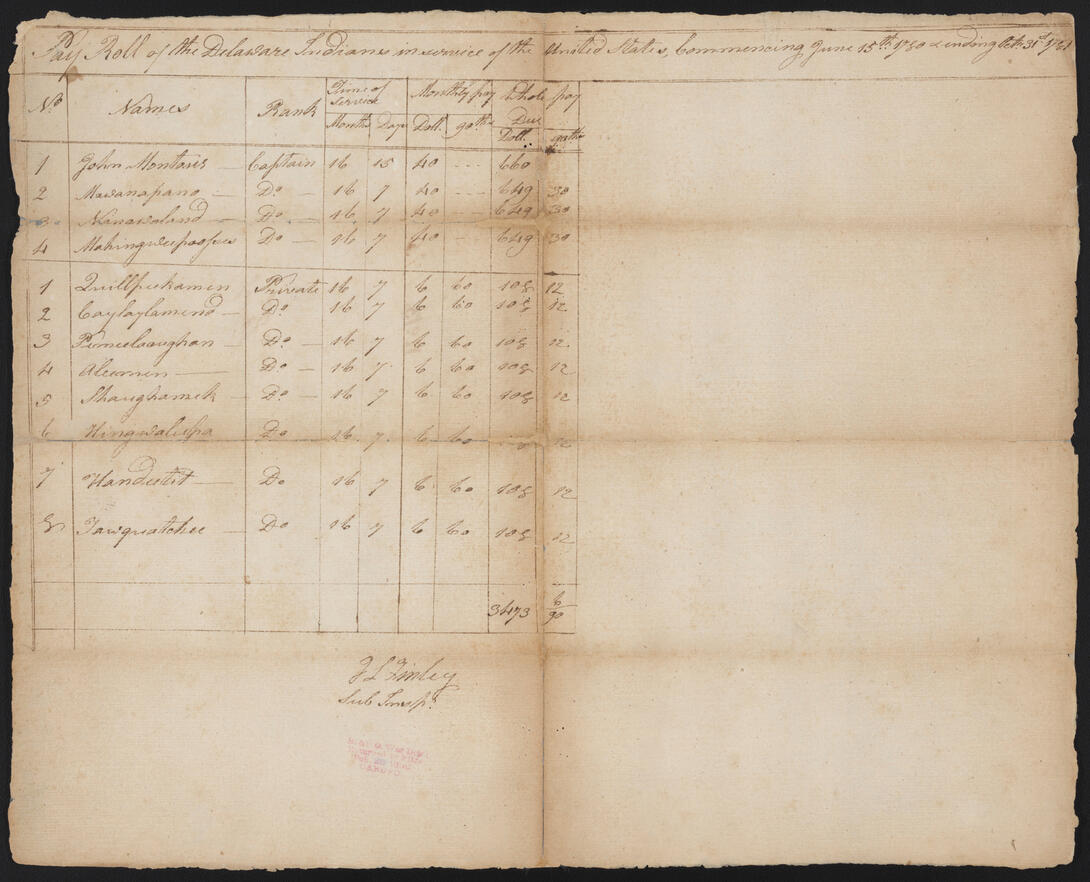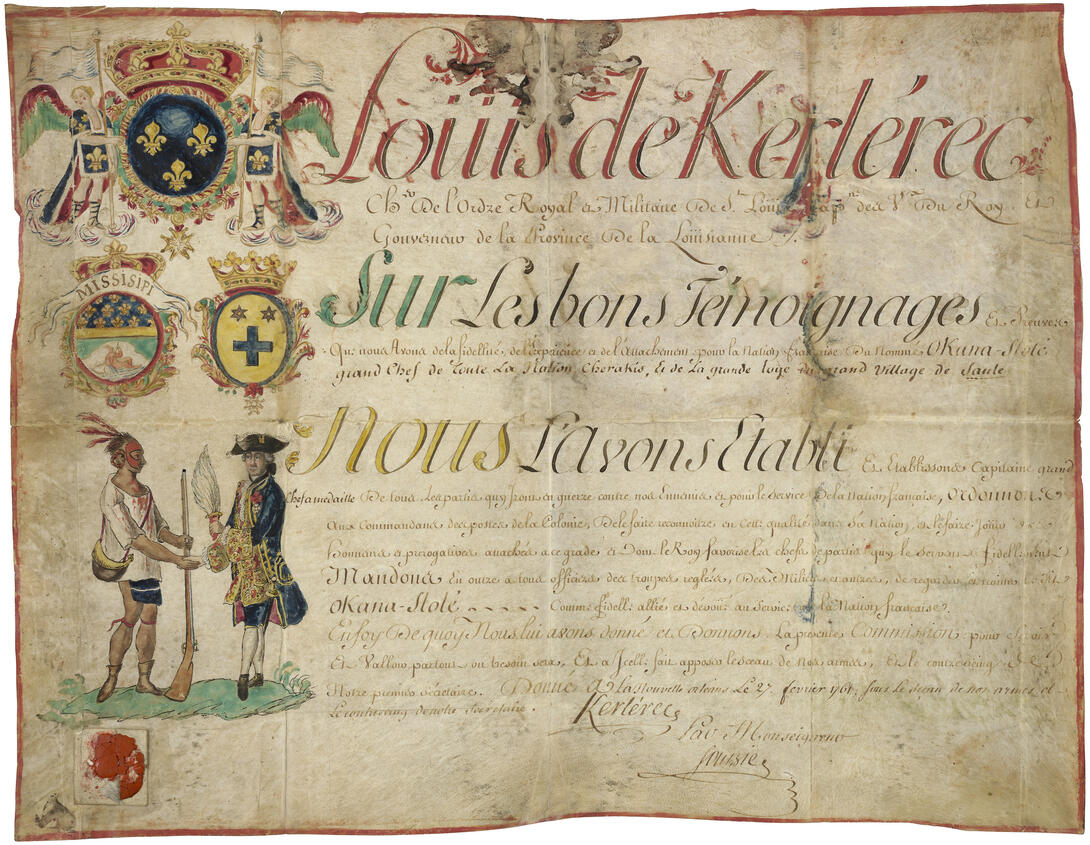Native Americans & the American Revolution
The American Revolution was a watershed event for the nation's Indigenous people.
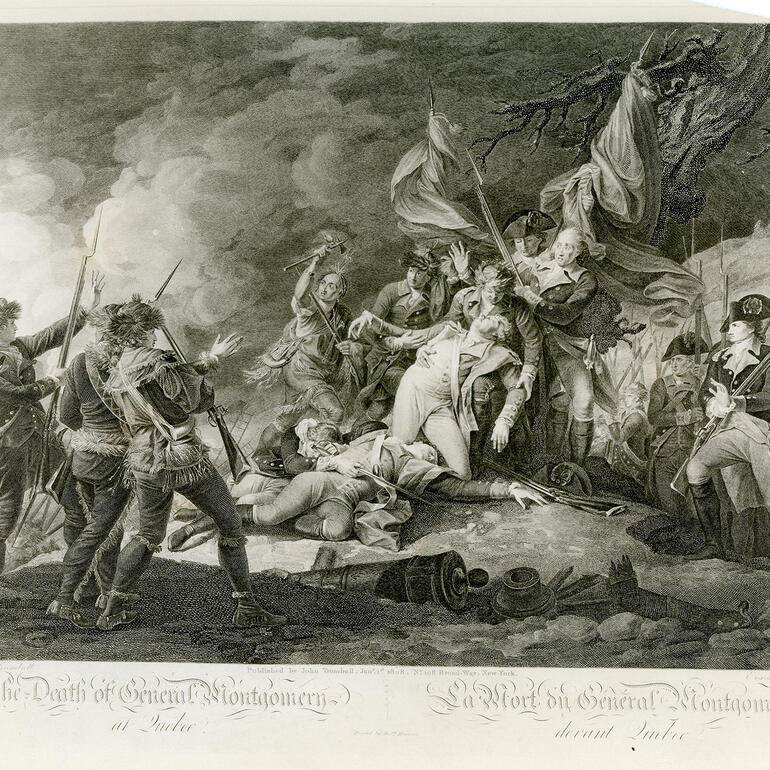
-
The Revolutionary War profoundly affected the approximately 250,000 Native Americans in British North America, just as it did the colonists. The stakes were high for the more than 80 tribes east of the Mississippi River, and most initially remained neutral.
Whether they sided with the Rebels, Redcoats, neither, or both, most did so for the same purpose—to preserve their lands and sovereignty. Regardless of how they chose to act, Native Americans saw many losses during the American Revolution, which had long-lasting effects on tribal lands, culture, and identity.
Copy of Engraving “Capitulation de Cornwallis. Washington, Rochambeau, Lafayette–19 Septembre, 1781” Records of Commissions of the Legislative Branch...Read more
Copy of Engraving “Capitulation de Cornwallis. Washington, Rochambeau, Lafayette–19 Septembre, 1781” Records of Commissions of the Legislative Branch
Read less -
The Stockbridge Indians were a mixed community of Mohican, Housatonic, and Wappinger people who had sought refuge in the “praying town” of Stockbridge, Massachusetts. They made common cause with the Americans and fought alongside the colonists–as minutemen and Continental soldiers–in the hope it would protect their lands and sovereignty. In 1778, a company of Stockbridge Indians was ambushed by British forces near Kingsbridge, NY. Their position is marked with a “D” on this map. The skirmish, which killed as many as 40 Indian soldiers, devastated the Stockbridge community.
Map of "Ambuscade of the Indians at Kingsbridge. August 31st. 1778." Records of the Office of the Chief of Engineers
-
The Stockbridge Indian community struggled to survive after losing 40 men in the Revolutionary War. Like all soldiers’ widows, Stockbridge women endured tremendous hardship without their spouse’s support. Stockbridge veterans and widows were also denied bounty lands promised to other Continental soldiers. Finding themselves increasingly marginalized by colonists in their town, they turned to the Continental Congress for help. Believing their “Active part in the War…deserved better treatment” this memorial unsuccessfully petitioned for assistance protecting their land.
Memorial of the Stockbridge Indians to Congress, March, 25, 1782. Records of the Continental and Confederation Congresses and the Constitutional Conve...Read more
Memorial of the Stockbridge Indians to Congress, March, 25, 1782. Records of the Continental and Confederation Congresses and the Constitutional Convention
Read less -
The Six Nations of the Iroquois (Haudenosaunee) Confederacy was a powerful league of independent tribes in western and upstate New York. Key to the Six Nations’ influence in colonial America was its unity and neutrality, which the tribes maintained at the war’s start. Calling the conflict a “family affair” in this 1775 speech to American agents, the Six Nations claimed it would “take no part in the Quarrel.”
The pressures of war ultimately fractured the Six Nations confederacy. The Cayuga, Mohawk, Onondaga, and Seneca tribes sided with the British while many Oneida and Tuscaroras supported the Americans. Like many colonial communities, the divided allegiances of the tribes transformed the Revolution into a civil war among the Six Nations.
Proceedings of the Commissioners Appointed by the Second Continental Congress to Negotiate a Treaty with the Six Nations of Indians, pages 32-33, 1775....Read more
Proceedings of the Commissioners Appointed by the Second Continental Congress to Negotiate a Treaty with the Six Nations of Indians, pages 32-33, 1775. Records of the Continental and Confederation Congresses and the Constitutional Convention
Read less -
As neutrality became increasingly precarious in Ohio Territory, leaders of the Delaware (Lenape) people signed the first U.S.-Indian treaty in 1778. They did so to assert their independence from other Native nations in the region and protect their lands. When the U.S. failed to fulfill its promise to protect Delaware territory, many defected to the British—but not all. This payroll is for a detachment of Delaware soldiers who served in the Continental Army late in the Revolutionary War. Faced with starvation and ongoing frontier violence, many peaceful Delaware eventually sought safety farther west.
Pay roll of the Delaware Indians in service of the United States, June 15th, 1780 to October 31, 1781. War Department Collection of Revoluti...Read more
Pay roll of the Delaware Indians in service of the United States, June 15th, 1780 to October 31, 1781. War Department Collection of Revolutionary War Records
Read less -
The American Revolution caused a schism among the Cherokee along generational lines. Young Cherokee warriors saw the Revolutionary War as their best opportunity to preserve tribal sovereignty and win back lost land. They allied with the British and attacked unlawful American settlements, which triggered retaliatory colonial violence.
With decades of experience navigating rival colonial powers and their wars, older chiefs like Okana-Stoté sought peace. In 1761, he was commissioned as a captain in service of the French during the Seven Years War and saw the profound consequences that war had for the Cherokee. Seeking to avoid a similar fate for his people, Okana-Stoté attempted to engage in diplomacy throughout the Revolution to little avail.
Military Commission Granted to Chief Okana-Stoté of the Cherokee by Governor Louis Billouart, Chevalier de Kerlérec, 1761. General Records of th...Read more
Military Commission Granted to Chief Okana-Stoté of the Cherokee by Governor Louis Billouart, Chevalier de Kerlérec, 1761. General Records of the Department of State
Read less -
Native Americans and the American Revolution is part three of Road to Revolution, a series of displays highlighting National Archives records that document the journey from colonial resistance to American independence and the diverse experiences of the nation's founding generation.
Road to Revolution is made possible in part by the National Archives Foundation, through the generous support of Comcast Corporation, Microsoft, and Procter & Gamble.






